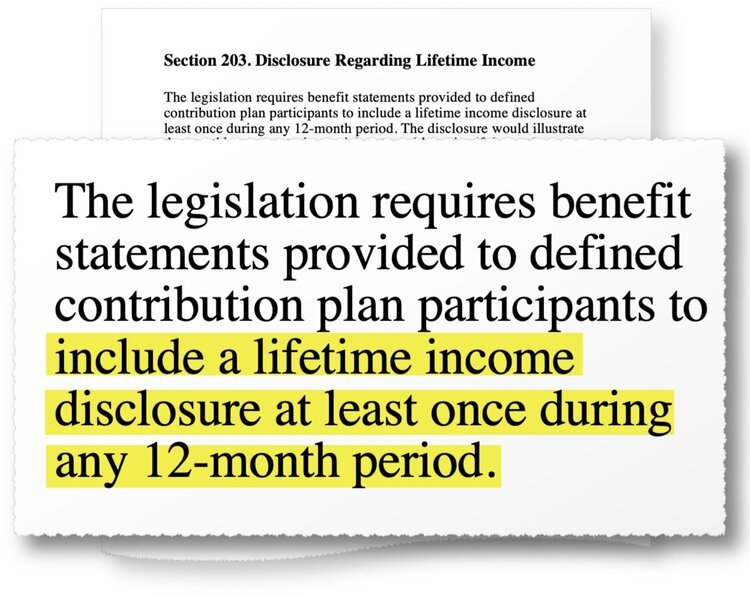DC Plan Income Disclosures are Coming
In last quarter’s newsletter we discussed some of the key changes of last year’s SECURE Act. One of those was a new requirement on DC plans to, at least annually, illustrate the value of a participant’s account as a lifetime annuity.
We noted that the requirement would be effective only after the Department of Labor (DOL) provides us with guidance.
In August, the DOL did release initial guidance and we are now in a 60-day review/comment period that began September 18. Once the 60 days end, the DOL will review comments and publish final regulations. The actual required disclosure will be effective one year after the final regulations are released.
Assuming no material changes, we’ve outlined what this disclosure may look like. It is important to note that a plan simply needs to illustrate the lifetime income. The SECURE Act does not require the plan to offer a lifetime income option. However, for plans that do, or want to through an annuity provider, the SECURE Act also took steps to make that easier.
For background, all defined benefit (and cash balance plans) must offer a guaranteed lifetime income for at least the participant’s life (and their spouse, if married). With increases in longevity, these guarantees, while important, have become more costly. Defined contribution plans can, but are not required to, offer this option, and most do not.
The proposed regulations require DC plan sponsors to illustrate the value of a participant’s account as a lifetime annuity based on the following assumptions:
The current account is converted to an annuity as if the participant is age 67 (or current age if older). Therefore, there’s no projection of future earnings or contributions included in this illustration.
The plan must illustrate both a single life annuity and a 100% joint and survivor annuity (with the spouse the same age as the participant).
The interest (or discount) rate is based on the current 10-year constant maturity Treasuries securities yield rate.
The mortality assumption is the same that defined benefit plans must currently use to convert an annuity into a lump sum.
DC plans that offer Single Life Annuities and Qualified Joint & Survivor Annuities can, instead, use the plan’s assumptions and J&S continuation percentage.
Below illustrates what this may look like for a sample participant.
This was the illustration provided by the DOL and was based on a 10-year constant maturity Treasuries securities yield rate of 1.83%, however, current rates are around 0.70%.
For any DC plans where Zenith American Solutions produces the statement, we have already begun preparing for this new requirement. As always, please call your Zenith American Solutions Client Services team with any questions.




